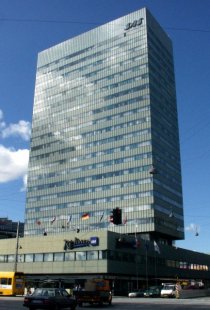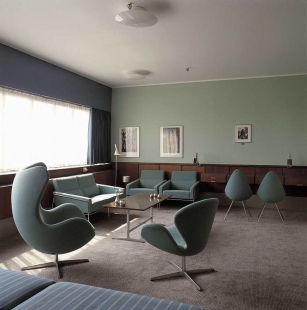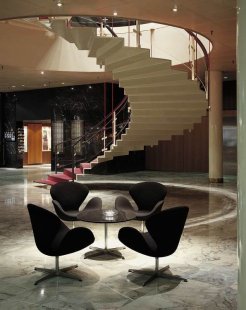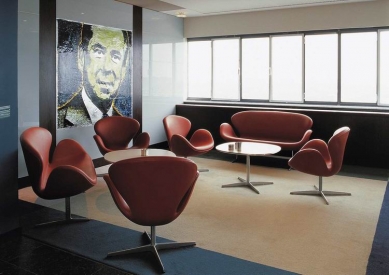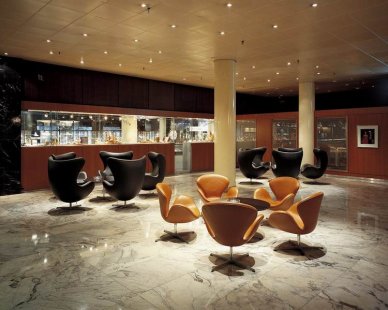
The Story of Scandinavian Modernism III.
The architect and designer Arne Jacobsen significantly enriched the world of furniture design. His work is still valued across the globe today.
The architect and designer Arne Jacobsen (1902-1971) was born in 1902 in Copenhagen to a wealthy merchant family. Even during his studies, he demonstrated extraordinary talent in drawing, and his creativity was unmistakable. After a brief experience in the navy and as a bricklayer, he enrolled at the Copenhagen Technical School, where he successfully completed his studies in 1924. He then studied architecture at the Danish Royal Academy under Professor Kaare Klint, who had a decisive influence on Arne Jacobsen's further professional direction. In 1925, the talented young architect was awarded a silver medal for several pieces of furniture at the World Exhibition in Paris, and in 1929, just two years after completing his studies (when he was 27 years old), he won the Copenhagen Architecture Exhibition with his ultramodern concept of the House of the Future. His long-standing friendship and collaboration with another pioneer of Scandinavian design, Fritz Hansen, brought Danish design, until then not very well known, onto the map of global design. At the time, his designs literally represented a technical revolution in the field of upholstered furniture.
For the Bellevue Theater in Klampenborg, north of Copenhagen, Arne Jacobsen designed chairs for the local theater café. The stackable chair, model 3100, later known as the Ant, was born. This was followed by other models of chairs: 3108 for the Danish Bank, model 3130, which received the Grand Prix at the eleventh La Triennale in Milan in 1957. And we cannot forget the most popular and best-selling product of all time: the chair 7 from 1955. Other seating furniture by Arne Jacobsen included the Egg and Swan chairs (from 1958). Both fully showcased Jacobsen's talent for material and its processing. Both chairs were also used in Copenhagen's Royal Hotel, which today attracts countless admirers of modernism from around the world. However, they know the hotel in the center of the Danish capital as the Radisson SAS Royal Hotel. The most famous room here is number 606, which is completely furnished with original Jacobsen furniture, exactly as it was in July 1960 when the hotel opened.
Explore the complete production of the Danish company Fritz Hansen at design portal myCode.
More information can also be found at www.fritzhansen.com
The Story of Scandinavian Modernism II.
- Completion next week -
